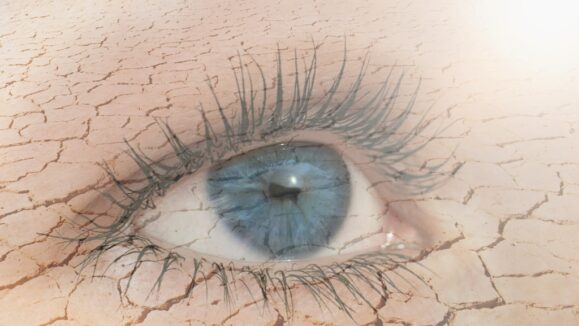An estimated 2.2 billion people worldwide suffer from visual impairment of some kind. Almost half of this is preventable or treatable, but some communities simply do not have access to the eye care they need.
Here, we take a look at two organizations making an impact by delivering eye care to some of Asia’s poorest communities.
Brien Holden Foundation
The Australia-based Brien Holden Foundation works with local partners in developing communities to build sustainable eye care systems and ensure that residents receive the eye care they need.
One of their projects is in Cambodia.
“We reached a good progression recently through our continued advocacy for eye health care to be added into the National School Health policy, which essentially denotes the care parameters for the children of Cambodia,” said Selina Madeleine, director of Brien Holden Foundation.
“Child eye health has now been ratified by the government to be included in the policy. We are currently in discussions to assist in the development of the supporting curriculum for the policy inclusion,” she added.
While Cambodia has recovered since the civil war and is now a rapidly developing Southeast Asian nation, access to quality health care remains a challenge thanks to cost and inequality.
A vision center set up by the Foundation in Phnom Penh in 2009 contributes to the elimination of uncorrected refractive error by providing the community with access to eye examinations, affordable prescription glasses and referrals.
In the last five years, it has worked in collaboration with the Cambodian Ministry of Education, Youth and Sport, the Australian government and international NGOs, to implement eye health care education programs for students at primary schools in five provinces.
Healthy vision is critical to childhood development, and screening children for eye disease is crucial because the damage caused to young eyes can have lifelong impacts.
Research in 2010 found that over 80% of vision impairment in children across Cambodia was due to uncorrected refractive error.
The Phnom Penh Vision Centre has screened and examined over 65,000 people and delivered over 21,000 spectacles to local beneficiaries. Cambodia has 77 ophthalmologists for a population of 15 million, and according to the Brien Holden Foundation, there are no locally-trained optometrists.
The foundation trains refraction nurses and spectacle technicians at its National Refraction Training Centre, among other efforts.
Sightsavers
Sightsavers is dedicated to combating avoidable blindness and promoting equal opportunities, providing eye operations for people who need them, and training eye care workers and surgeons.
Through community volunteers, it also distributes medication to people in some of the world’s poorest countries.
Some of the eye conditions which it treats and prevents include cataracts, which can lead to blindness if left untreated.
Last year, 403,000 cataract operations were supported by Sightsavers, which aims to make it easier for people to be treated for cataracts, especially in poorer countries where surgery is not always readily available.
It also aims to improve the quality of cataract surgery and increase the number of operations performed by increasing the number of surgeons, nurses and community workers trained in eye health, as well as educating people about cataracts and explaining where to get treatment.
Since it was set up in 1950, Sightsavers has helped to carry out 7.7 million cataract operations in poorer countries, and trained more than 1,000 surgeons.
One of the many people who have benefited from Sightsavers’ work is 55-year-old Zamurrad, from Rawalpindi in northern Pakistan, who lost her sight to cataracts.
When Zamurrad developed cataracts, her vision deteriorated and she struggled to do anything for herself or her family and she was scared to leave the house. One day, she heard that operations were available for free at a Sightsavers partner hospital, and the rest is history.
“When I was not well and I had this cataract, my husband used to do everything for me,” she said a year after her surgery.
“I can see everything clearly: I’m very happy and I do all my household chores now,” she added.
The charity also treats refractive errors, which can be particularly problematic in developing countries, where those affected may not be able to afford or have access to sight tests or spectacles to help improve their vision.
In February this year, the foundation set up a one-day eye screening camp in Rangpur, Bangladesh, for the Bihari community, a minority group of people who have experienced discrimination and lacked access to essential services since they fled violence in India in the 1940s to live in Bangladesh.
Patients diagnosed with cataracts were referred for a free cataract operation. If a patient needed glasses, or a new prescription, they were prescribed glasses or eye drops.
A total of 321 adults and children attended the camp. Seventy-five were given eye drops, 57 needed cataract operations, 52 had their glasses checked, and 29 received pairs of glasses.
Hasina, who attended the one-day camp, was diagnosed with cataracts. She was referred for surgery at the Community Eye Care and Research (CERC) hospital in Rangpur. According to Sightsavers, Hasina has since had her second eye operation and is doing well.
Since 2004, Sightsavers has dispensed 4.6 million pairs of spectacles across Africa, Asia and the Caribbean as part of efforts to boost universal eye care.
It has also helped to train 732 optometrists and 433 optometric technicians, who are able to carry out sight tests, diagnose eye problems and help to treat people with low vision in some of the poorest parts of the world, who may otherwise not have access to eye care.
Sightsavers’ School Health Integrated Programming (SHIP) project, which ran throughout 2016, also screened schoolchildren in Cambodia, Ethiopia, Ghana and Senegal for health problems such as poor eyesight.
Teachers were trained to carry out basic eye tests and refer children for further treatment. During the project, 57,400 children were screened for eye problems and 1,000 were given spectacles.
Together, through efforts like those from the Brien Holden Foundation and Sightsavers, we can hope to make a visible impact on those who need it most.



![iStock 1207202567 [Converted]_V2](https://cookiemagazine.org/wp-content/uploads/sites/6/2022/03/iStock-1207202567-Converted_V2-01-579x326.jpg)